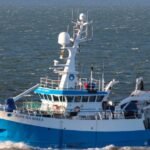A new study from Heriot Watt University reveals that nearly two thirds of vessels in Scotland’s Marine Protected Areas go undetected due to lack of AIS signals. This hidden traffic raises serious risks for whales, dolphins and other marine life in these vital waters.
Study Uncovers Vast Monitoring Gaps
Researchers from Heriot Watt University conducted over 1800 hours of surveys in six key Marine Protected Areas across Scotland. Their work, done with groups focused on whale and dolphin protection, shows that Automatic Identification System data misses most boat movements. Only about a third of traffic gets tracked, leading to underestimates of human impact on sensitive seas.
The team looked at coastal and offshore spots from 2019 to 2025, building on earlier findings from April this year. That prior report noted just 43 percent of coastal vessels near Scotland broadcast AIS signals. Now, in protected zones, the figure drops even lower, highlighting a nationwide issue in marine oversight.
Experts point out that AIS serves as the main tool for watching ship paths worldwide. Without it, planners and conservationists rely on incomplete pictures, which can skew efforts to protect ecosystems. Dr. Emily Hague, who led the research, stressed that this blind spot means real dangers go unseen in areas meant to shield wildlife.

Key Areas Face Uneven Detection Rates
Detection levels differ widely among the studied sites, showing how local factors affect tracking. For instance, some spots near busy ports capture more signals, while remote bays see far less. This variation makes uniform protection challenging for Scotland’s diverse coastline.
The research covered popular habitats for marine species, from northern isles to western sounds. These places draw boats for fishing, tourism and recreation, but many operators skip AIS, especially smaller ones. As Scotland expands its MPA network to cover 37 percent of seas by late 2024, such gaps could undermine new safeguards like those added for historic wrecks in August 2025.
To illustrate the differences, here is a table of AIS detection rates for the six MPAs examined:
| MPA Name | AIS Detection Rate (%) |
|---|---|
| Moray Firth | 35 |
| Mousa | 52 |
| Inner Hebrides and Minches | 28 |
| Loch Sunart to Sound of Jura | 41 |
| Sea of the Hebrides | 51 |
| Lamlash Bay | 6 |
This data underscores why some areas, like Lamlash Bay, need urgent attention. Low rates there mean almost all traffic slips by, even as the site protects bottlenose dolphins and other species.
Fast Moving Boats Heighten Wildlife Risks
Small recreational craft, such as motorboats and yachts, top the list of undetected vessels. These boats often zip through waters at speeds over 7.5 knots, creating loud underwater noise that stresses marine animals. More than half of observed vessels hit this speed, yet most lack AIS, evading standard risk assessments for collisions and disturbances.
Whales and dolphins suffer most from such activity. Sudden boat approaches can force them to dive deeper or flee habitats, disrupting feeding and breeding. Seals and basking sharks face similar threats, with noise pollution linked to long term behavioral changes. Recent events, like warnings about kayakers bothering seals in June 2025, echo these concerns and show how everyday users add to the problem.
- Key risks from undetected vessels include:
- Collision with large mammals like minke whales.
- Noise that alters dolphin communication and echolocation.
- Habitat avoidance by species in high traffic zones.
- Cumulative stress leading to population declines in MPAs.
Only two of the six studied MPAs have rules targeting non fishing boats, leaving most open to unchecked speeds. This setup fails to address the full scope of threats, as smaller craft make up the bulk of fast movers.
Push for Stronger Rules and Tech Upgrades
Leaders in marine conservation call for better tools beyond AIS to spot all traffic. Ideas include drone surveillance, expanded radar and incentives for boat owners to fit transmitters. Scotland’s government, fresh from adding offshore fishing bans in October 2025, could tie these into broader plans for sustainable seas.
The study urges quick action to match monitoring with MPA goals. By filling data gaps, officials can better enforce speed limits and no go zones, much like recent scallop dredge reforms. Ties to global efforts, such as UK wide trawling reviews in September 2025, suggest Scotland leads but must innovate to keep pace.
Related trends, like volunteer networks tracking whale sightings since 2024, offer hope. These ground level efforts complement tech fixes and build public awareness. As climate shifts push more species into coastal waters, accurate tracking becomes essential for survival.
Readers, this issue affects Scotland’s rich marine heritage. Share your thoughts in the comments below and spread the word to help protect these oceans.


















